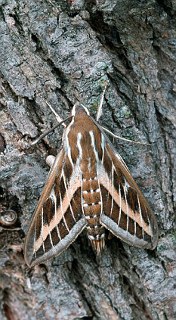New generation spy: the cyborg moth
Community and Forum → Blog → New generation spy: the cyborg moth
Lev Bely, 17.02.2012 21:31

MIT (Massachusetts Institute of Technology) researches successfully implanted an electric neural probe into the body of a huge, fist-sized moth. That's it, a pull-string spy is ready to use.
Cyborg moth not only can be turned at will left or right, moreover, it could put more or less effort in that being even more manageable than a remote control plane. This is a first “offspring” of a big $18.5 million U.S. government project on controlling insects with electrical signals. And all this ado is aimed to get one beautiful day these mini-cyborgs started a government career as perfect super spies. The project is partially financed by the U.S. military.
The electric neural probe equipped with a battery is applied to a radio receiver for taking signals apart. The whole 0.5 gm “ammunition” is implanted directly into the insect abdomen. “Their wingspan is the width of your hand,” says Joel Voldman of MIT in a report in New Scientist. “These are big guys.”
“This is a major advance,” says neurobiologist Roy Ritzmann of Case Western Reserve University in Cleveland Ohio.
The researches together with neurobiologists are exploring if similar probes could be implanted into a human body. “It turns out that there are a bunch of nerves in humans that are about the same size,” says Voldman.
The project workout showed that the moth could be turned left or right getting signals into certain bundles of nerves. The electric probe is attached to the ventral nerve cord while five electrodes are fixed to different bundles of nerves inside the insect body. The turning radius can be changed with the current given.
The probe is made of a polyamide polymer coated with gold and carbon nanotubes. Such mixture guarantees the thing won't break down at crucial moment. Stay cool, spy!
The Daily Mail, http://www.dailymail.co.uk
Photo: The Daily Mail, http://www.dailymail.co.uk
All the rest posts on: science, USA, technology
Comments
New comment
Note: you should have a Insecta.pro account to upload new topics and comments. Please, create an account or log in to add comments.
* Our website is multilingual. Some comments have been translated from other languages.
Random species of the website catalog
News
- 02.03.2025: Moscow Insect Fair: New section on the Insecta.pro Website
- 31.12.2024: If you need to upload a lot of photos to Insecta.pro website
- 10.12.2024: Новое поле в «Поиске энтомологов»
New photos (25.03.2025)
Fresh from the community
- 12:52, L. Bolshakov: Петр, см. там подробности: https://...
- 12:32, P. Khramov: Лавр, источник скиньте, пожалуйста....
- 23:33, L. Bolshakov: К сожалению, вы поступили неверно. ...
Popular insects
Recommended blog topics
- ICZN Election of Commissioners
- 20th International Insect Fair in Moscow (Russia, October 2023)
- Meantime in Japan
- Device not only for feeding: death's-head hawk moth is able to peep



























